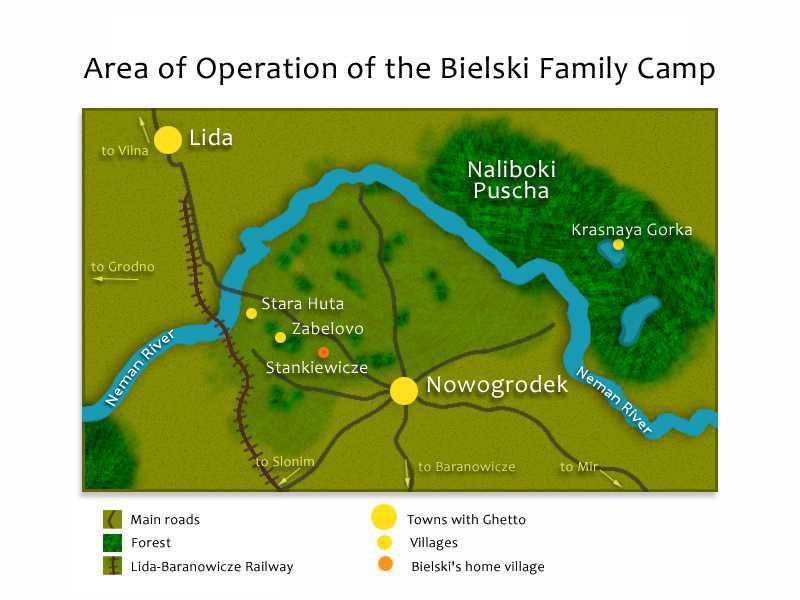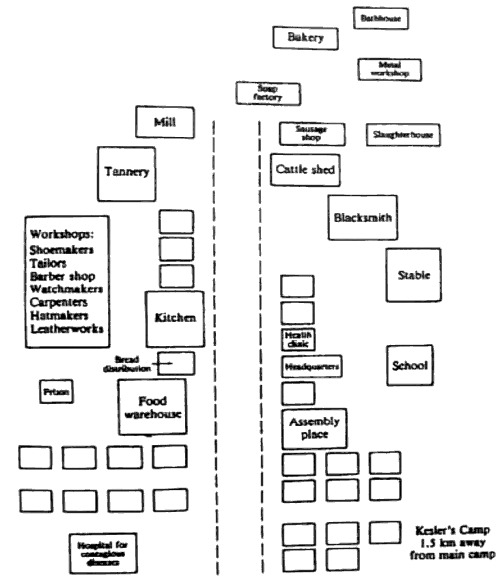On December 7, 1941, all the Jews of Novogrudok - 6,000 people – were gathered on the territory of the Provincial court. In the morning of December 8 a selection was carried out. It was accompanied by a mass execution. By the end of the day 75% of the Novogrudok Jewish community was shot in the forest near the village of Skrydlevo.
From August 6, 1942 until September 26, 1943 there was a ghetto on the territory of the former Provincial Court which had a status of a labor camp.
The complex includes a building of the former Provincial Court; houses in which the workshops were located; a well; a building which served as a residential barrack for ghetto prisoners; a building where the labor camp guards were stationed; territory adjacent to the tunnel which was about 208 m long.
Barraks in the ghetto of Novogrudok
250 escapees from the Novogrudok ghetto join the Bielski partisans
In August 1942, a large number of people who had escaped from the Novogroudok ghetto joined the Bielski partisans group in the forest. Among them was Jack Kagan.
Jack was born in 1929 and until he was 10, lived in Novogródek, eastern Poland with his family. At 12 years old, Jack and his father were among 500 Jews who were sent to a forced labour camp and it was here that he heard about the partisans, a resistance movement fighting the Nazis from the forests of Eastern Europe and protecting Jews who had escaped from ghettos.
In 1943, Jack escaped from his barracks through a tunnel dug by himself and other prisoners. He joined the Bielski partisans, a resistance group which later became the focus of the film, Defiance. starring Daniel Craig. Along with over 1,200 men, women and children, the group lived and survived in the Naliboki forest as a community and managed to create synagogues, bakeries, a hospital and even an airstrip.
The Bielski built their first dugout in the forest near their home village of Stankievichi in the early summer of 1942 just for the family of about 20 people. By November 1942 they were a detachment of 250 men, women and the elderly, all being Jewish.
Map of the Naliboki Forest.
Map of the Bielski original camp in the Naliboki Forest, Belarus




